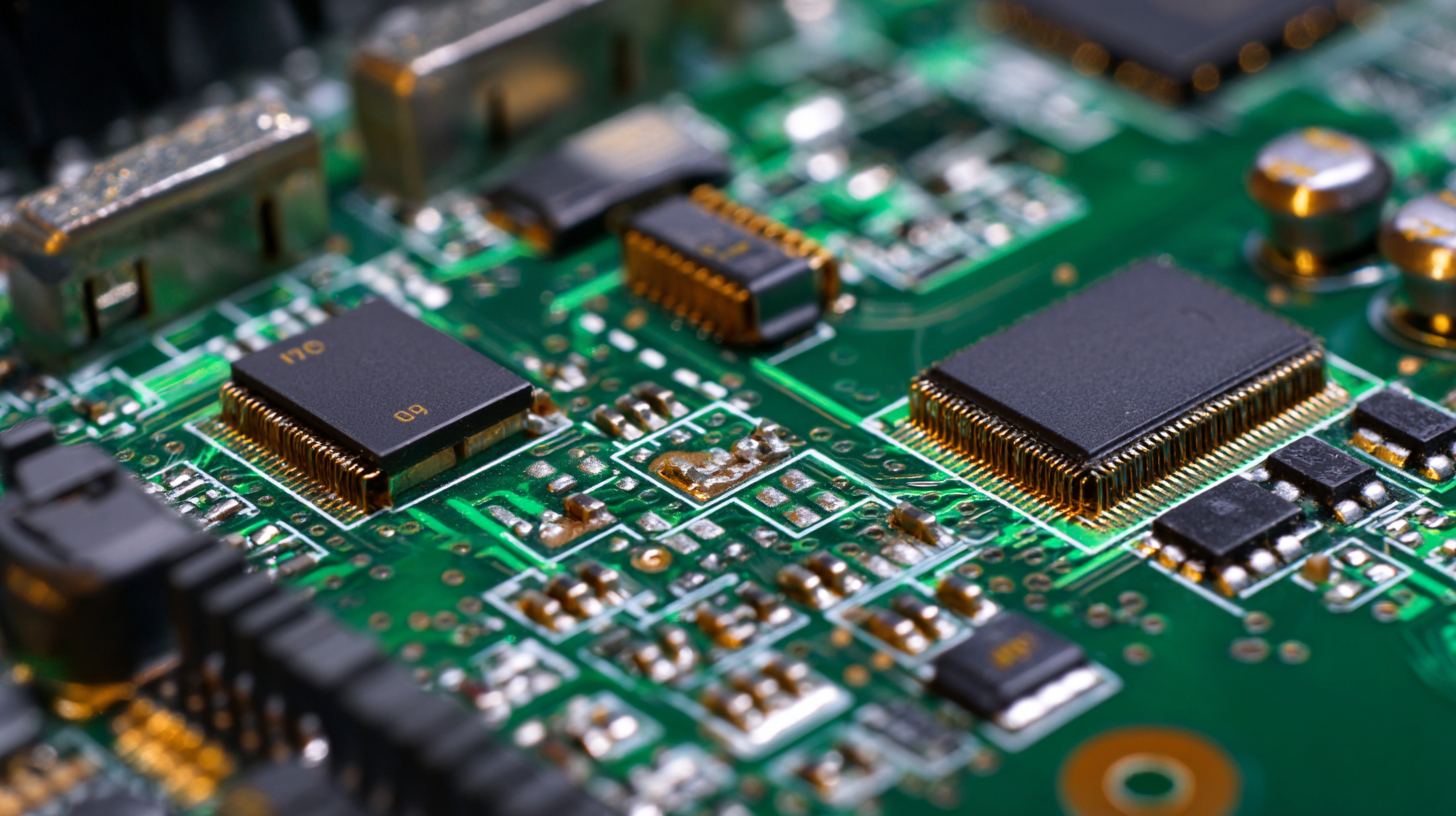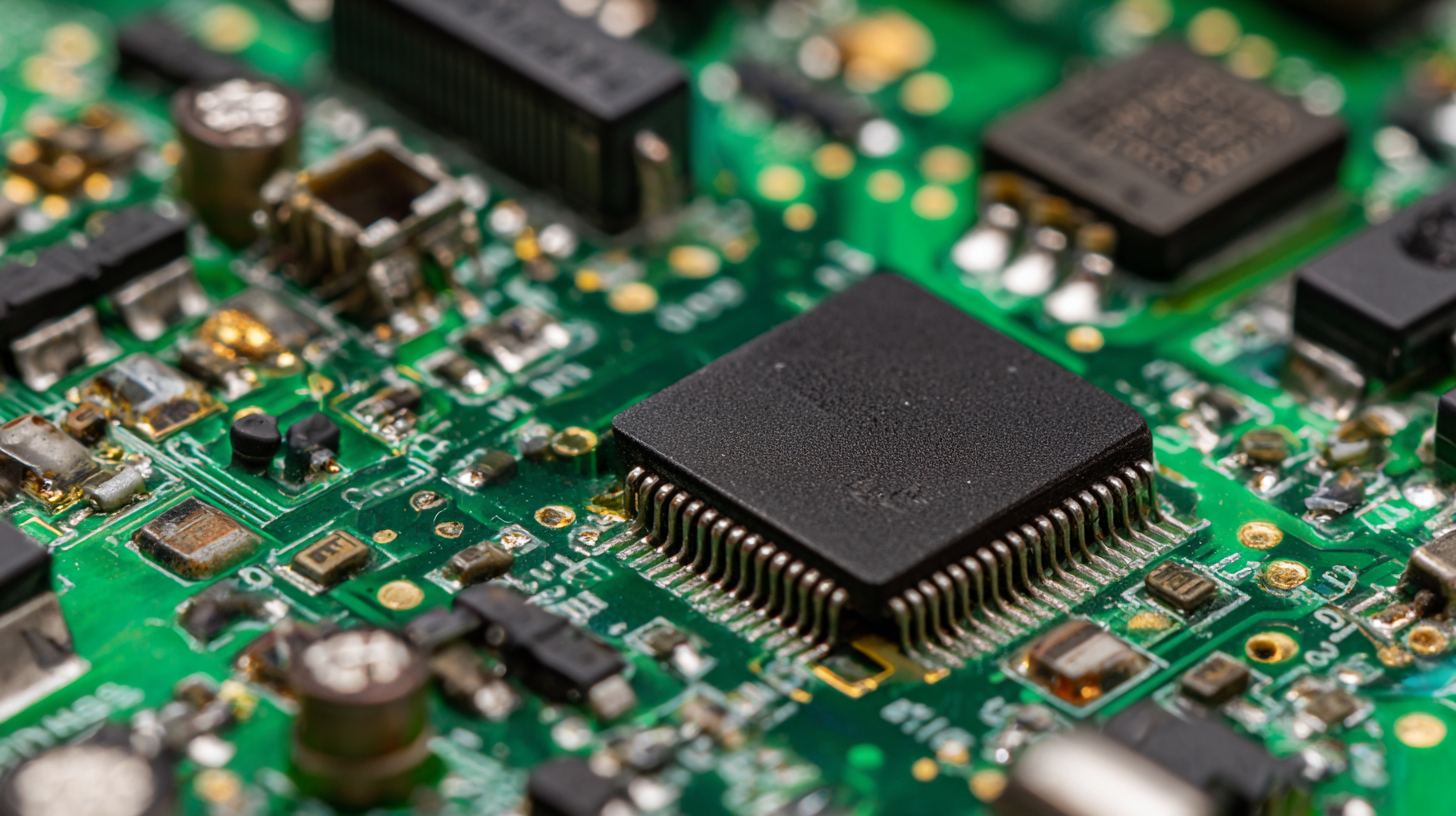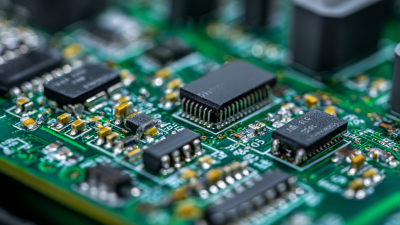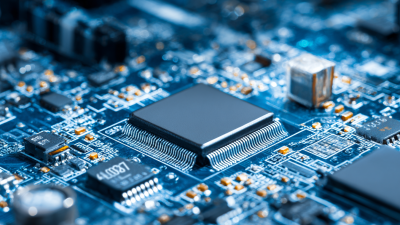 In the fast-evolving landscape of modern electronics, the efficiency and reliability of devices are significantly influenced by the quality and design of PCB components. According to a recent report by MarketsandMarkets, the global PCB market is projected to reach approximately $87 billion by 2027, highlighting the growing demand for advanced circuit board technologies. Notably, innovations in PCB components are crucial in driving down power consumption and enhancing performance metrics in various applications, including telecommunications, automotive systems, and consumer electronics. As devices become increasingly compact and complex, the role of high-quality PCB components becomes paramount to ensure optimal functionality and longevity. Understanding the specific impact these components have on device reliability and efficiency is essential for manufacturers striving to meet the rigorous standards set by today's market.
In the fast-evolving landscape of modern electronics, the efficiency and reliability of devices are significantly influenced by the quality and design of PCB components. According to a recent report by MarketsandMarkets, the global PCB market is projected to reach approximately $87 billion by 2027, highlighting the growing demand for advanced circuit board technologies. Notably, innovations in PCB components are crucial in driving down power consumption and enhancing performance metrics in various applications, including telecommunications, automotive systems, and consumer electronics. As devices become increasingly compact and complex, the role of high-quality PCB components becomes paramount to ensure optimal functionality and longevity. Understanding the specific impact these components have on device reliability and efficiency is essential for manufacturers striving to meet the rigorous standards set by today's market.
The role of PCB components in enhancing electronics efficiency is increasingly critical as the demand for high-performance devices rises. According to a report by Mordor Intelligence, the global printed circuit board market is expected to grow at a CAGR of 5.6% from 2021 to 2026. This growth underscores the importance of optimizing PCB design and component selection to ensure reliable performance in modern electronics.

Key components, such as capacitors, resistors, and inductors, play a pivotal role in circuit function and efficiency. For instance, the integration of high-frequency capacitors can significantly reduce energy loss and improve timing accuracy, leading to faster processing speeds. A study by IPC reveals that optimizing PCB layout can decrease power consumption by up to 30%, a crucial factor in extending the battery life of portable devices. Additionally, selecting high-quality materials for PCB components can enhance thermal management, ensuring that devices operate reliably under varying conditions.
As technologies such as 5G and IoT continue to evolve, the meticulous selection of PCB components will not only boost efficiency but also enhance the overall reliability of electronic systems. A recent analysis by ResearchAndMarkets indicated that advancements in component technology directly correlate with improved performance metrics, making strategic component choices essential for competitive edge in the electronics sector.
 The miniaturization of printed circuit boards (PCBs) is fundamentally reshaping the electronics industry by enhancing efficiency and reliability. As consumer demand shifts toward smaller, more powerful, and multifunctional devices, the design of PCBs is evolving to meet these challenges. This trend not only drives innovation in materials and manufacturing processes but also raises questions about the reliability of smaller components within these designs.
The miniaturization of printed circuit boards (PCBs) is fundamentally reshaping the electronics industry by enhancing efficiency and reliability. As consumer demand shifts toward smaller, more powerful, and multifunctional devices, the design of PCBs is evolving to meet these challenges. This trend not only drives innovation in materials and manufacturing processes but also raises questions about the reliability of smaller components within these designs.
Key factors affecting the reliability of PCB components include the quality of materials used, the precision of manufacturing techniques, and the effectiveness of automated inspection processes. The implementation of Surface Mount Technology (SMT) alongside advanced 2D automated optical inspection (AOI) plays a critical role in ensuring that the integrity of smaller components is maintained throughout production. By focusing on reliability in the design phase and adopting robust inspection methodologies, manufacturers can better navigate the complexities introduced by miniaturization and fulfill the growing demands of the market.
Selecting the right PCB components is crucial for maximizing the performance of modern electronic devices. One of the best practices is to prioritize high-quality materials that enhance durability and reduce failure rates. For instance, when choosing capacitors and resistors, it's essential to consider their temperature coefficients and tolerances. Components with tighter tolerances can lead to increased reliability, especially in applications where precise performance is critical. Additionally, using components that are designed for specific environmental conditions can significantly improve the longevity and efficiency of the overall system.
Another important aspect of component selection is ensuring compatibility with the intended circuit design. This involves evaluating parameters such as voltage ratings, current capacities, and power dissipation characteristics. It is advisable to consult datasheets thoroughly to verify that selected components will perform optimally under expected operating conditions. Furthermore, considering the footprint is essential for maintaining a compact PCB layout while avoiding issues related to signal integrity and thermal management. By following these best practices, engineers can effectively enhance the efficiency and reliability of their electronic designs.
| Component Type | Efficiency Rating (%) | Reliability Index (1-10) | Common Applications | Best Practice for Selection |
|---|---|---|---|---|
| Capacitors | 90 | 8 | Power Supply Filtering | Choose low ESR types for high frequency |
| Resistors | 95 | 9 | Voltage Division | Select precision resistors for accuracy |
| Inductors | 85 | 7 | Signal Filtering | Use shielded inductors for EMI reduction |
| Diodes | 92 | 8 | Rectification | Opt for Schottky for low forward voltage |
| Transistors | 88 | 8 | Amplification | Select based on gain and bandwidth needs |
The thermal management of PCB (Printed Circuit Board) components plays a critical role in enhancing the efficiency and reliability of modern electronic circuits. As electronic devices become increasingly compact and powerful, the heat generated by various components can significantly impact performance. Effective thermal management strategies, including the use of thermal vias, heat sinks, and thermal interface materials, are essential to dissipate excess heat and maintain optimal operating temperatures. By minimizing thermal hotspots, these strategies help prevent degradation of electronic components and extend their lifespan.
Furthermore, the design of the PCB layout itself is crucial for effective thermal management. Strategic placement of components, considering airflow and heat flow paths, can drastically reduce thermal resistance. Innovative materials, such as thermal conductive substrates, can also aid in heat dissipation, enhancing the overall thermal performance of the circuit. Incorporating simulation tools during the design phase allows engineers to predict thermal behavior and make informed decisions to optimize heat management, ultimately leading to improved reliability and efficiency in electronic devices.
The evolution of Printed Circuit Board (PCB) technology has significantly influenced the reliability and efficiency of modern electronics, particularly in automotive applications. With the expansion of electronic systems in vehicles, there is a growing trend towards incorporating advanced PCB components such as flexible and multilayer designs. These innovations facilitate more complex interconnections and allow manufacturers to meet the demands of increasingly compact spaces, supporting the integration of power converters and enhancing overall system performance.
In addition to automotive applications, PCBs serve critical functions in varied sectors including consumer electronics, aerospace, medical devices, and military applications. The shift towards high-density interconnection (HDI) and flexible circuit substrates shows a clear commitment to improving the reliability of electronic devices. As the market continues to expand, projected growth rates indicate that PCB technologies will be pivotal in shaping the future of power management systems, ultimately contributing to enhanced performance and sustainability in modern electronic designs.




